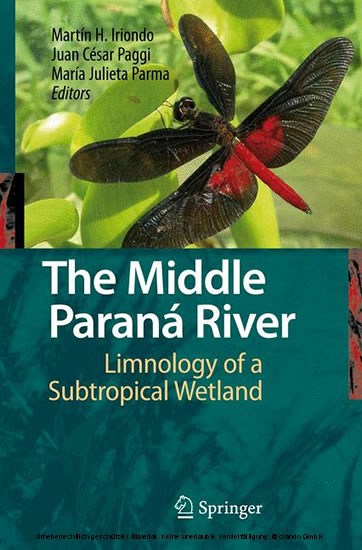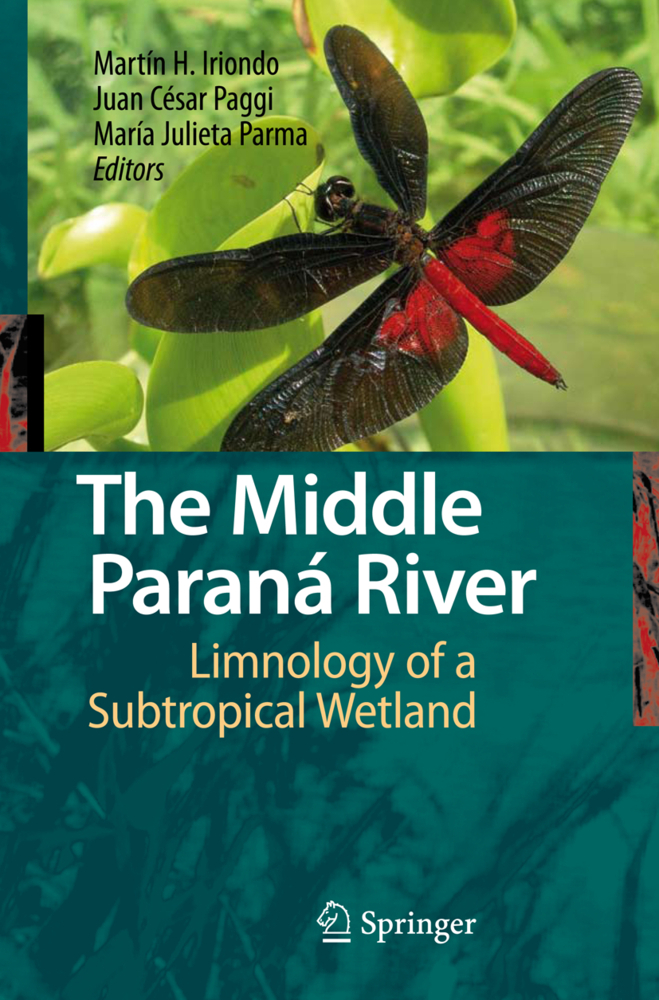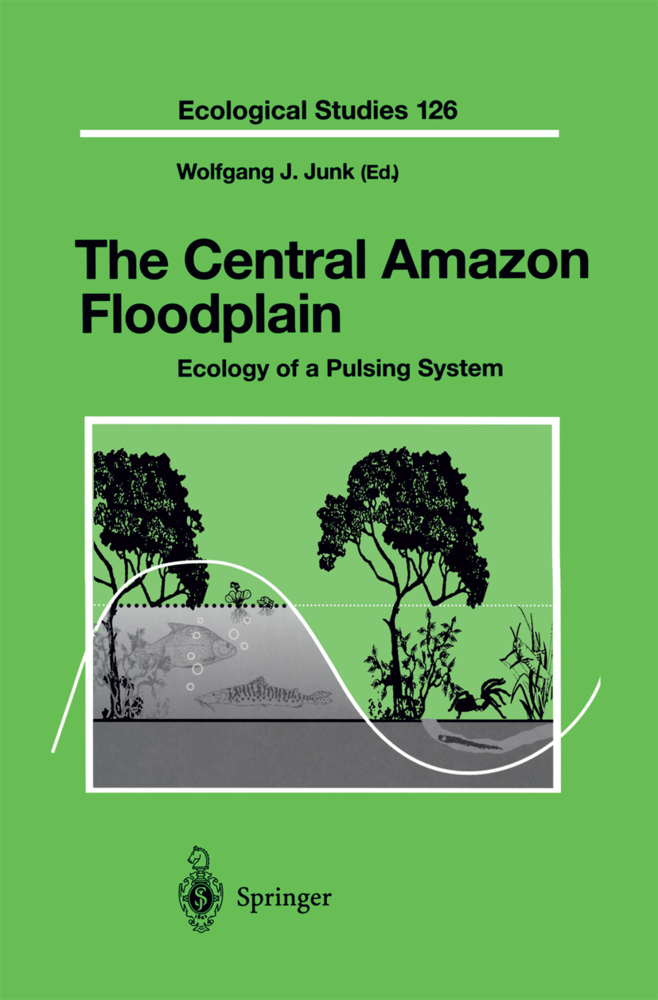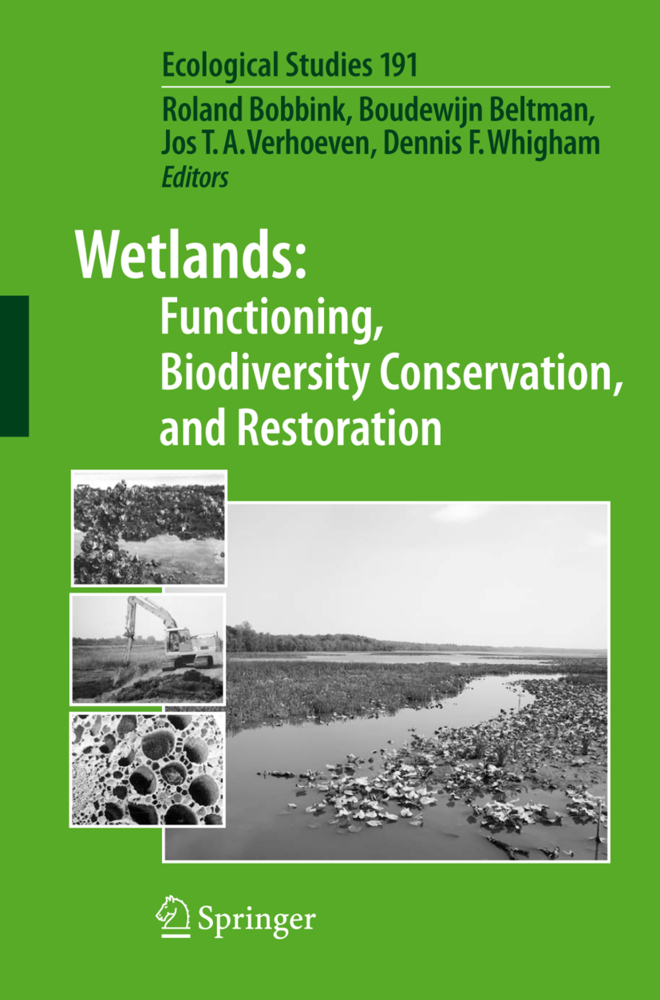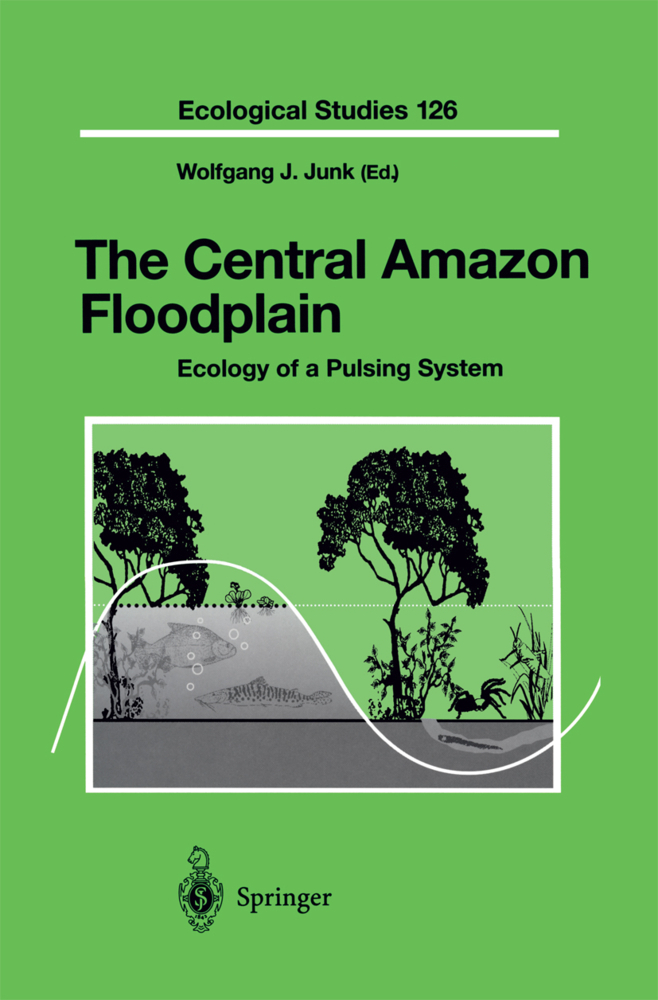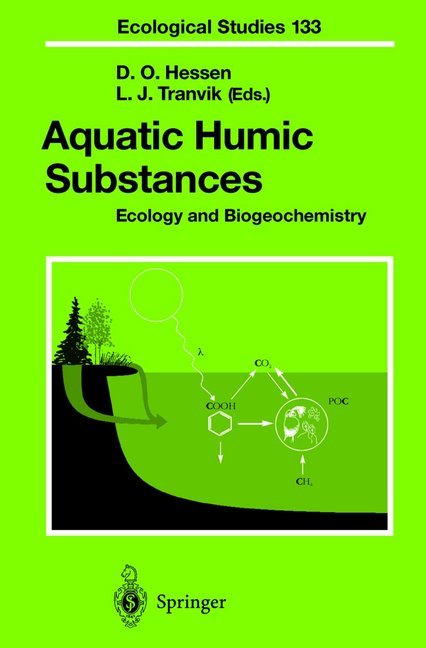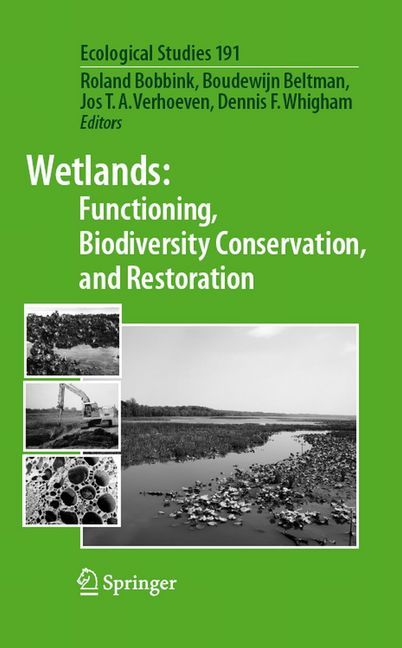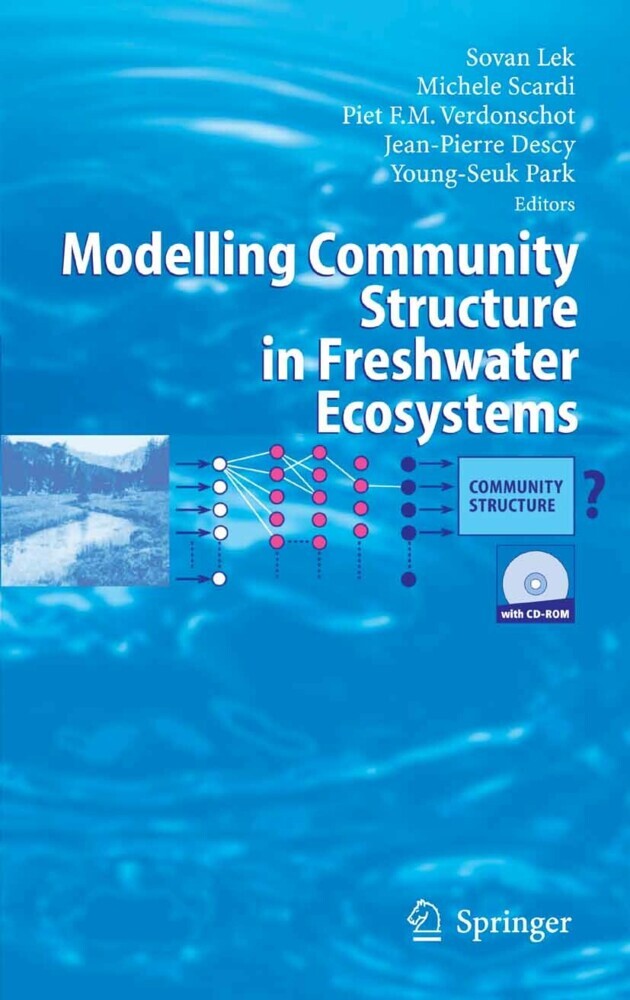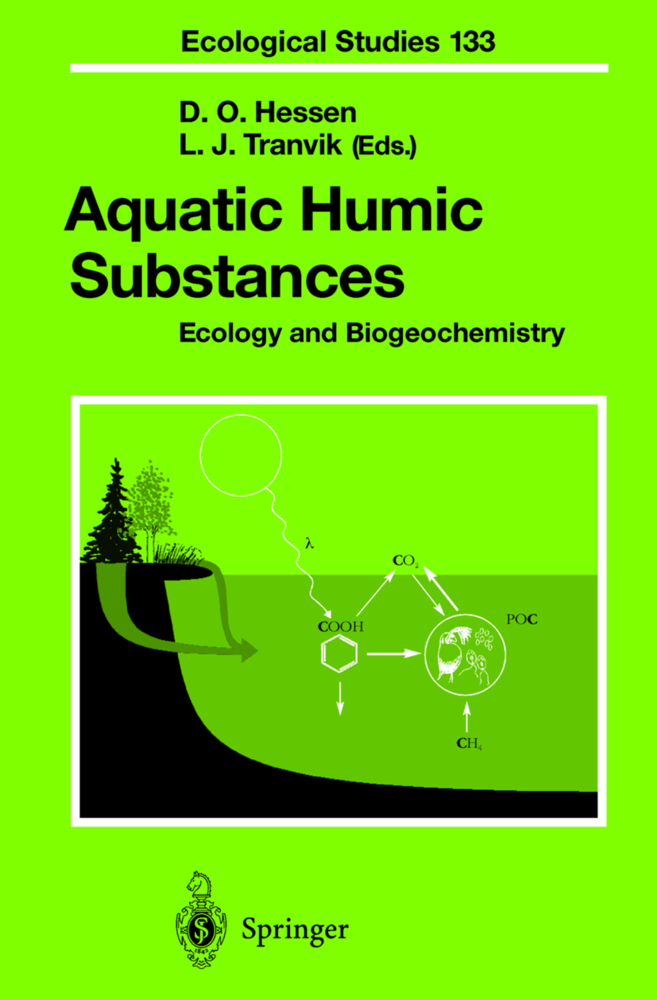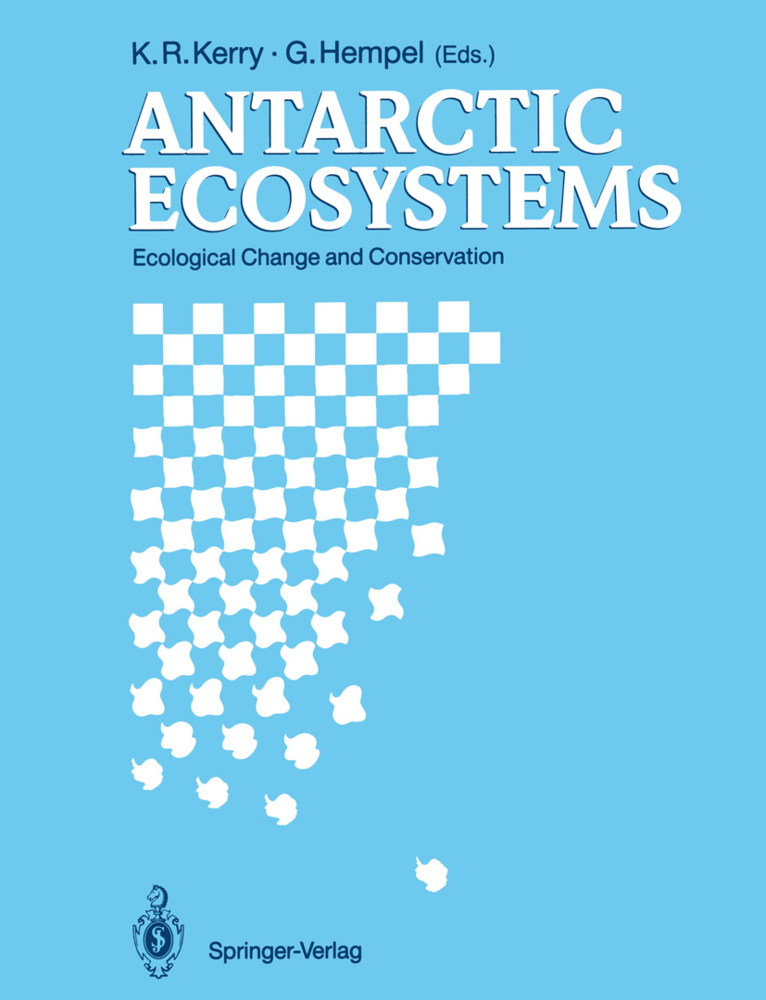The Middle Paraná River
Limnology of a Subtropical Wetland
The Middle Paranß River, one of the largest rivers in the world, is exceptionally rich in fauna and flora and provides researchers a glimpse into an ecosystem yet undisturbed by human civilization. Covering the key aspects of fluvial limnology and ecology related to the river, this book is arranged in the following four sections:The Physical and Chemical Environment; Plant Life; Invertebrate Animal Life; Vertebrate Animal Life.This in-depth and up-to-date review encapsulates 40 years of detailed study by researchers at the Instituto Nacional de Limnología (INALI, CONICET-UNL, Argentina), an internationally renowned institution almost exclusively devoted to the exploration of the Middle Paranß, the most important 600-km-long reach of the river. It is a fascinating read for both specialists and general naturalists alike.
1;Contents;4 2;List of Contributors;8 3;Introduction;12 4;Part I The Physical and Chemical Environment;16 4.1;1 Physical Geography of the Basin;17 4.1.1;1.1 Introduction;17 4.1.2;1.2 Geology;17 4.1.3;1.3 Climate;19 4.1.4;1.4 Hydrography;22 4.1.5;References;41 4.2;2 Geomorphology;42 4.2.1;2.1 The Surrounding Regions;42 4.2.2;2.2 Neotectonics;47 4.2.3;2.3 Climate;48 4.2.4;2.4 Climatic Changes in the Quaternary;48 4.2.5;2.5 The Sediments;49 4.2.6;2.6 Geomorphology;49 4.2.7;References;60 4.3;3 Origin, Evolution, and Types of Floodplain Water Bodies;62 4.3.1;3.1 Introduction;62 4.3.2;3.2 The Middle Paraná Floodplain;62 4.3.3;3.3 Origin and Shape of Lentic Water Bodies;73 4.3.4;3.4 Lake Morphometry;77 4.3.5;3.5 Lake Evolution;84 4.3.6;3.6 Aquatic and Riparian Vegetation as a Morphological Factor;85 4.3.7;3.7 Concluding Remarks;86 4.3.8;References;89 4.4;4 The Physical Dynamics of the River-Lake Floodplain System;91 4.4.1;4.1 Introduction;91 4.4.2;4.2 Water Regime of the Floodplain Lakes;91 4.4.3;4.3 Suspended Sediments;103 4.4.4;4.4 Bottom Sediment Resuspension, Mixing Depth, and Sedimentation Rate;108 4.4.5;4.5 Water Temperature;110 4.4.6;4.6 Lake Heat Content;120 4.4.7;4.7 Work of the Wind and Stability of Stratification;122 4.4.8;4.8 Conclusions;124 4.4.9;References;127 4.5;5 Fluvial Sediments: Main Channel and Floodplain Interrelationships;131 4.5.1;5.1 Introduction;131 4.5.2;5.2 Basic Concepts;132 4.5.3;5.3 The Main Channel;132 4.5.4;5.4 Sediment Transport and Processes in the Alluvial Plain;142 4.5.5;5.5 Conclusions;148 4.5.6;References;149 4.6;6 The Geochemistry of the Paraná River: An Overview;151 4.6.1;6.1 Introduction;151 4.6.2;6.2 Geological and Hydrological Framework;152 4.6.3;6.3 The Chemistry of Dissolved Components;156 4.6.4;6.4 The Signature of Weathering in the Drainage Basin;161 4.6.5;6.5 The Provenance of Sediments;167 4.6.6;6.6 Main Biogeochemical Characteristics;173 4.6.7;6.7 Conclusions;178 4.6.8;References;179 5;Part II Plant Life;183 5.1;7 Phytoplankton;184 5.1.1;7.1 Introduction;184 5.1.2;7.2 Phytoplankton Distribution Along the Main River and at Cross Channel;185 5.1.3;7.3 Temporary Variations during Normal Hydrological Cycles and Extraordinary Periods in the Main Channel;189 5.1.4;7.4 Temporary Changes in Side Channels of Different Size and Connectivity Degree;191 5.1.5;7.5 Temporary Variations in Floodplain Lakes with Different Water Residence Time and Vegetation;196 5.1.6;7.6 Conclusions;207 5.1.7;References;209 5.2;8 Aquatic Macrophytes;211 5.2.1;8.1 Introduction;211 5.2.2;8.2 Plant Communities and Succession;213 5.2.3;8.3 Habitat Characteristics and Ecological Factors;218 5.2.4;8.4 Plant Dynamics and Growth;224 5.2.5;8.5 Biomass and Productivity;225 5.2.6;8.6 Use of Resources;228 5.2.7;8.7 Conclusions;229 5.2.8;References;230 6;Part III Invertebrate Animal Life;233 6.1;9 Zooplankton;234 6.1.1;9.1 Introduction;234 6.1.2;9.2 Zooplankton of Rivers and Floodplain Shallow Lakes: Similarities and Differences;235 6.1.3;9.3 Factors Regulating Zooplankton Abundance and Seasonal Distribution in Floodplain Lakes;238 6.1.4;9.4 Flood Pulse, Physical Variables and Potamozooplankton Dynamics;241 6.1.5;9.5 Zooplankton of the Main Channel and the Contribution of High Reaches and the Floodplain;245 6.1.6;9. 6 Connectivity and Species Richness;247 6.1.7;9.7 Conclusions;249 6.1.8;References;250 6.2;10 Benthic Invertebrates;255 6.2.1;10.1 Introduction;255 6.2.2;10.2 Spatiotemporal Longitudinal Patterns;257 6.2.3;10.3 Spatiotemporal Lateral and Vertical Patterns;264 6.2.4;10.4 Temporary Marginal Wetlands;265 6.2.5;10.5 Floodplain Lakes;266 6.2.6;10.6 Vertical Dimension;268 6.2.7;10.7 Factors Influencing the Benthic Structure;269 6.2.8;10.8 Functional Feeding Groups and Food Webs;270 6.2.9;10.9 Bivalvia Invasive Species in Benthic Communities;272 6.2.10;10.10 Conclusions;273 6.2.11;References;275 6.3;11 Littoral Communities. Macrocrustaceans;280 6.3.1;11.1 Introduction;280 6.3.2;11.2 Biological Features;282 6.3.3;11.3 Intra-
Iriondo, M. H.
Paggi, J. C.
Parma, M. J.
| ISBN | 9783540706243 |
|---|---|
| Artikelnummer | 9783540706243 |
| Medientyp | E-Book - PDF |
| Copyrightjahr | 2007 |
| Verlag | Springer-Verlag |
| Umfang | 382 Seiten |
| Sprache | Englisch |
| Kopierschutz | Digitales Wasserzeichen |

